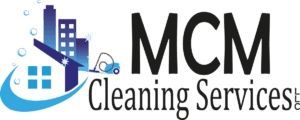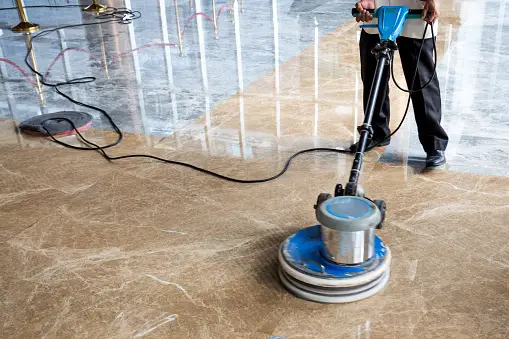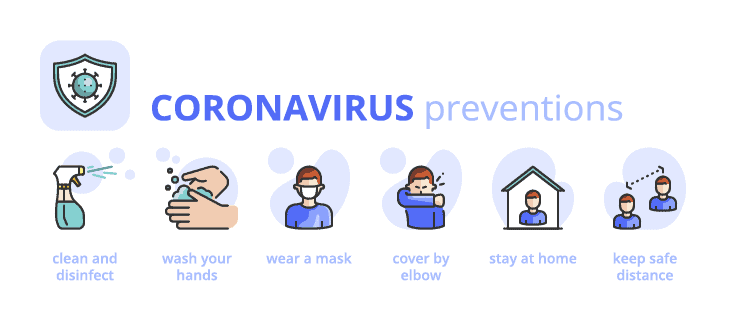
Cleaning Safety Tips for Homes and Businesses
Date Posted:
March 7, 2024
Introduction
Cleaning is an essential task for maintaining a healthy and hygienic environment, both at home and in businesses. However, it’s crucial to prioritize safety while cleaning to avoid accidents and injuries. In this article, we’ll explore various safety tips that individuals and businesses can implement to ensure a safe cleaning process.
Understanding Cleaning Safety
Cleaning safety involves taking precautions to minimize the risk of accidents and injuries during the cleaning process. Whether you’re using chemicals, electrical appliances, or cleaning tools, understanding safety protocols is vital to protect yourself and others.
Importance of Cleaning Safety
Prioritizing cleaning safety not only protects individuals from accidents but also promotes efficiency and effectiveness in the cleaning process. It reduces the likelihood of damage to property and minimizes the risk of exposure to harmful substances.
Risks Associated with Cleaning
Cleaning involves various hazards, including slips and falls, chemical exposure, electrical accidents, and fire hazards. Without proper safety measures, these risks can lead to injuries, illnesses, or property damage.
Safety Equipment and Gear
Using appropriate safety equipment and gear is essential for protecting yourself while cleaning. From gloves and goggles to aprons and masks, wearing the right gear can prevent injuries and minimize exposure to harmful substances.
Importance of Using Proper Gear
Safety gear serves as a barrier between individuals and potential hazards. It shields the body from chemicals, sharp objects, and other dangers commonly encountered during cleaning tasks.
Types of Safety Equipment
Some essential safety equipment for cleaning includes:
- Gloves: Protect hands from chemicals and sharp objects.
- Goggles: Shield eyes from splashes and airborne particles.
- Masks: Prevent inhalation of dust, fumes, and toxic substances.
- Aprons: Keep clothing clean and protect against spills.
Chemical Safety
Cleaning chemicals can pose significant risks if not handled properly. Understanding chemical hazards and following safety protocols is crucial to prevent accidents and exposure-related illnesses.
Understanding Chemical Hazards
Many cleaning chemicals contain hazardous ingredients that can irritate the skin, eyes, and respiratory system. Some chemicals are flammable or corrosive, posing additional risks if not handled with care.
Proper Handling and Storage of Cleaning Chemicals
When using cleaning chemicals, it’s essential to:
- Read and follow product labels and safety data sheets.
- Wear appropriate protective gear, including gloves and masks.
- Avoid mixing different chemicals, as it can produce harmful reactions.
- Store chemicals in a well-ventilated area away from heat sources and direct sunlight.
Electrical Safety
Electrical appliances are commonly used in cleaning tasks, but they can also pose significant safety risks if mishandled or neglected. Following electrical safety guidelines is essential to prevent accidents and electrocution.
Risks Associated with Electrical Appliances
Using damaged or malfunctioning electrical appliances increases the risk of electrical shocks, fires, and other accidents. Water and cleaning solutions can also enhance conductivity, making it even more dangerous to use electrical devices.
Tips for Safe Electrical Cleaning
To ensure electrical safety during cleaning:
- Inspect appliances for damage before use and repair or replace any faulty equipment.
- Keep electrical cords away from water and cleaning solutions.
- Use ground fault circuit interrupters (GFCIs) in wet areas to prevent electrical shocks.
- Unplug appliances when not in use and avoid overloading electrical outlets.
Preventing Slips, Trips, and Falls
Slips, trips, and falls are among the most common accidents during cleaning. Implementing preventive measures can significantly reduce the risk of injuries caused by falls.
Importance of Floor Safety
Slippery or uneven surfaces increase the likelihood of slips, trips, and falls. Maintaining clean and dry floors is crucial for preventing accidents, especially in high-traffic areas.
Tips for Preventing Slips and Falls
To prevent slips and falls:
- Clean up spills promptly and use warning signs to alert others.
- Use slip-resistant mats or rugs in areas prone to wetness.
- Keep walkways clear of clutter and obstacles.
- Install handrails and grab bars in bathrooms and staircases for added support.
Fire Safety
Cleaning activities involving flammable materials or heat sources can pose fire hazards if proper precautions are not taken. Understanding fire safety measures is essential to prevent fires and minimize property damage.
Fire Hazards in Cleaning
Common fire hazards during cleaning include:
- Ignition of flammable substances, such as solvents and aerosol sprays.
- Overloading electrical outlets or using damaged wiring.
- Improper disposal of flammable materials, such as oily rags.
Fire Prevention Tips
To reduce the risk of fires during cleaning:
- Use non-flammable cleaning products whenever possible.
- Avoid smoking or using open flames in areas where flammable materials are present.
- Store flammable substances in designated containers away from heat sources.
- Keep fire extinguishers readily accessible and ensure they are regularly inspected and maintained.
Proper Ventilation
Good ventilation is essential during cleaning to remove airborne contaminants and maintain air quality. Proper ventilation helps prevent exposure to harmful fumes and improves overall indoor air quality.
Importance of Ventilation During Cleaning
Cleaning products can release volatile organic compounds (VOCs) and other harmful gases into the air, especially in confined spaces. Adequate ventilation ensures these pollutants are diluted and expelled from the environment.
Tips for Improving Ventilation
To enhance ventilation while cleaning:
- Open windows and doors to allow fresh air to circulate.
- Use exhaust fans or ventilation systems to remove airborne contaminants.
- Avoid using cleaning products with strong odors in poorly ventilated areas.
- Take frequent breaks outdoors to reduce exposure to indoor pollutants.
Safe Handling of Equipment
Proper handling of cleaning equipment is essential to prevent accidents and injuries. Whether using manual tools or powered machinery, following safety guidelines can minimize risks and ensure a safe cleaning environment.
Importance of Equipment Safety
Improper use or maintenance of cleaning equipment can lead to accidents, equipment damage, or injury to users. Regular inspection and proper handling are essential for extending the lifespan of cleaning tools and machinery.
Tips for Safe Equipment Handling
When using cleaning equipment:
- Read and follow manufacturer instructions for proper use and maintenance.
- Inspect equipment before each use and address any defects or malfunctions immediately.
- Use appropriate personal protective equipment (PPE) when operating machinery.
- Avoid overexertion and follow proper lifting techniques to prevent strain and injury.
Safe Disposal of Waste
Proper waste disposal is essential for maintaining cleanliness and preventing environmental contamination. Improper disposal of waste can pose health risks to humans and wildlife and harm the environment.
Risks Associated with Improper Waste Disposal
Improper disposal of cleaning waste, such as chemicals, packaging materials, and contaminated items, can lead to pollution of soil, water, and air. It can also attract pests and pose a risk of injury to sanitation workers.
Tips for Safe Waste Disposal
To ensure safe waste disposal:
- Separate recyclable materials from non-recyclable waste.
- Dispose of hazardous materials, such as batteries and electronics, at designated collection sites.
- Follow local regulations for the disposal of chemical waste and hazardous materials.
- Consider composting organic waste to reduce landfill waste and promote sustainability.
Creating a Cleaning Safety Plan
Developing a cleaning safety plan is essential for businesses to ensure the health and safety of employees and customers. A comprehensive safety plan outlines procedures, protocols, and responsibilities for maintaining a safe cleaning environment.
Importance of a Safety Plan
A cleaning safety plan provides guidance and accountability for implementing safety measures and responding to emergencies effectively. It promotes consistency and standardization in cleaning practices, reducing the risk of accidents and injuries.
Components of a Cleaning Safety Plan
A cleaning safety plan should include:
- Risk assessment: Identifying potential hazards and evaluating their likelihood and severity.
- Safety protocols: Establishing guidelines for safe cleaning practices and procedures.
- Training and education: Providing employees with the knowledge and skills to perform cleaning tasks safely.
- Emergency preparedness: Developing procedures for responding to accidents, spills, fires, and other emergencies.
- Regular review and updates: Periodically evaluating and revising the safety plan to address changing needs and circumstances.
Training and Education
Proper training and education are essential for ensuring that cleaning staff understand and follow safety protocols. Comprehensive training programs equip employees with the knowledge and skills needed to perform their jobs safely and effectively.
Importance of Training for Cleaning Staff
Training empowers cleaning staff to recognize and mitigate potential hazards, reducing the risk of accidents and injuries. It also instills a culture of safety within the organization, emphasizing the importance of prioritizing safety in all cleaning activities.
Topics to Cover in Safety Training
Safety training for cleaning staff should include:
- Hazard recognition: Identifying potential hazards associated with cleaning tasks and substances.
- Proper use of safety equipment: Demonstrating how to use and maintain personal protective equipment (PPE) correctly.
- Chemical safety: Educating staff on the safe handling, storage, and disposal of cleaning chemicals.
- Emergency procedures: Providing guidance on responding to accidents, spills, fires, and other emergencies.
- Equipment operation: Training employees on the proper use and maintenance of cleaning tools and machinery.
Regular Maintenance of Equipment
Regular maintenance of cleaning equipment is essential for ensuring safe and efficient operation. Routine inspection and servicing help identify and address issues before they escalate into safety hazards.
Importance of Equipment Maintenance
Proper maintenance prolongs the lifespan of cleaning equipment and reduces the risk of malfunctions or breakdowns during use. It also ensures that equipment operates safely and effectively, minimizing the risk of accidents and injuries.
Tips for Maintaining Cleaning Equipment
To keep cleaning equipment in optimal condition:
- Follow manufacturer guidelines for maintenance and servicing intervals.
- Clean equipment after each use to remove dirt, debris, and chemical residues.
- Inspect hoses, cords, and attachments for signs of wear or damage and replace as needed.
- Lubricate moving parts regularly to prevent friction and extend the lifespan of equipment.
Emergency Preparedness
Being prepared for emergencies is essential for mitigating risks and minimizing the impact of accidents during cleaning activities. Developing an emergency response plan ensures that employees know how to react quickly and effectively in crisis situations.
Importance of Being Prepared for Emergencies
Emergencies such as spills, fires, and injuries can occur unexpectedly during cleaning. Having a well-defined emergency response plan in place helps minimize panic and confusion, enabling swift and coordinated action to address the situation.
Creating an Emergency Response Plan
An emergency response plan should include:
- Emergency contact information: Providing contact details for emergency services, medical facilities, and key personnel.
- Evacuation procedures: Establishing evacuation routes and assembly points in case of fire or other emergencies.
- First aid protocols: Training employees in basic first aid techniques and providing access to first aid supplies.
- Incident reporting: Implementing procedures for documenting and reporting accidents, injuries, and near misses.
- Regular drills and reviews: Conducting emergency drills and simulations to ensure staff are familiar with procedures and identifying areas for improvement.
Conclusion
Prioritizing safety is essential for maintaining a healthy and hazard-free environment during cleaning activities. By implementing the safety tips outlined in this article, individuals and businesses can minimize risks, prevent accidents, and promote a culture of safety in their cleaning practices.
FAQs
1. Why is cleaning safety important?
Cleaning safety is important to protect individuals from accidents, injuries, and exposure to harmful substances during cleaning activities. Prioritizing safety promotes efficiency, effectiveness, and overall well-being.
2. What are some common hazards in cleaning?
Common hazards in cleaning include slips and falls, chemical exposure, electrical accidents, fire hazards, and improper handling of equipment and waste.
3. How can businesses improve cleaning safety?
Businesses can improve cleaning safety by developing comprehensive safety plans, providing proper training and education for staff, maintaining equipment regularly, and being prepared for emergencies.
4. What should I do in case of a cleaning-related emergency?
In case of a cleaning-related emergency, remain calm and follow established emergency procedures. Contact emergency services if needed and provide assistance to those affected while awaiting help.
5. How often should cleaning safety protocols be reviewed?
Cleaning safety protocols should be reviewed regularly to ensure they remain up-to-date and effective. It’s essential to adapt protocols as needed to address new hazards or changes in cleaning practices.
To get started, request a quote here.







